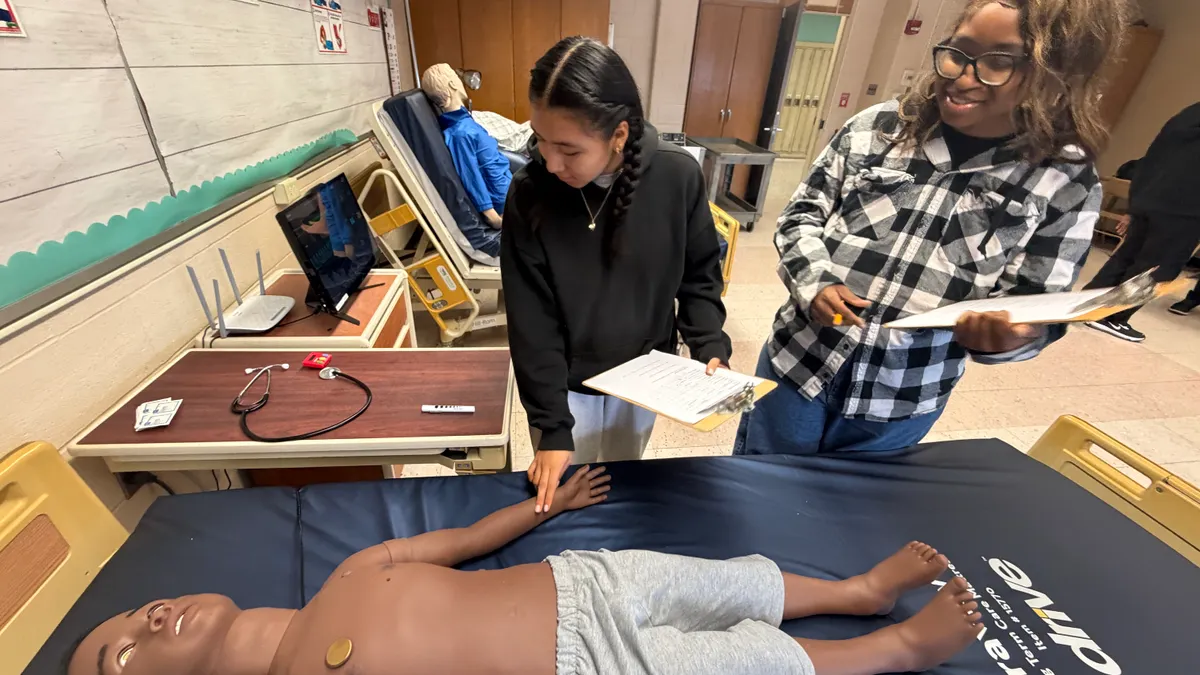Robert Marino is the assistant superintendent and leads the curriculum and instruction department at the Trumbull County Educational Services Center (TCESC), Lauren DeJulio is a curriculum and instruction special education supervisor for the TCESC, and Angela Guarneri is the elementary language arts supervisor for the TCESC.
By the time a student reaches 3rd grade, the common expectation is that he or she should be able to read at grade level and make the mid-year transition from “learning to read to reading to learn.” States uphold this expectation as a benchmark, and those children who fail to achieve this goal could be in danger of retention.
In 2018, the Trumbull County Educational Service Center (TCESC) was awarded a $1.2 million Striving Readers Comprehensive Literacy Formula grant from the Ohio Department of Education to support pre-K-12 literacy.
Knowing that student retention does not always resolve student reading difficulties, and recognizing that our teachers need specific tools to help them quickly identify and intervene with struggling readers, the TCESC partnered with local school districts to develop successful personalized student learning programs to support state 3rd-grade reading mandates.
The primary grant goals are to ensure teachers provide whole-class literacy instruction based on the science of teaching reading, and that struggling readers receive personalized interventions based on specific deficits. Through evidence-based literacy professional development in brain research and The Simple View of Reading, we aim to enhance day-to-day instructional practices by closing learning gaps and build life-long readers.
To help meet our goals, we initially focused on the ability of teachers to access universal screeners that provide real-time data in order to identify and pinpoint reading deficits. We needed to make sure the technology solution would not increase teacher workloads or frustration levels and would provide valid and accurate information to make personalized decisions based on each child’s specific learning need.
The K-12 Lexia RAPID Assessment and the K-5, Lexia Core5 Reading program provides a user-friendly format and allows educators to quickly analyze data. Here’s what we did.
Make it a joint effort
Our ESC has a curriculum and instruction department with 13 supervisors who support the instruction and curricular needs of 20 diverse school districts. In addition, the Striving Readers Grant enabled us to hire one K-3 literacy coach for each grant district. By utilizing assessment technologies, our literacy coaches embed teacher professional learning, model tailored lessons based on data, and work one-on-one with students on a daily basis.
Through this partnership, we knew the assessment technology had to include a strong professional development component. We were asking teachers to change the manner in which they use assessment data to inform classroom instructional practices while also adhering to a personalized literacy instruction model, all of which needed strong support from the district, building and ESC level. Only with that support could these goals be implemented with fidelity.
Do your homework before selecting a vendor
Fortunately, our vendor provides key research data and detailed blueprints on implementation support, such as conducting calls with teachers and administrators, coming into the buildings and demonstrating how to use the platform, and sharing insight on how to use student achievement data to drive personalized instruction.
These efforts focus on a single goal of providing teachers with knowledge and real-time data that is able to drive personalized reading instruction in classrooms through the deployment of instructional best practices.
Make professional learning a priority
In our ESC, the 13 curriculum and instruction team members support this work using a multifaceted approach to teacher professional learning. We focus on educating teachers on the art of making informed data-driven decisions regarding instructional adjustments in order to ensure students have access to high-quality classroom instruction.
We support these focal points by supporting individualized, grade-level, building, district and multi-district professional learning days where a multitude of learning options are offered — all of which are tailored, data-driven and relative to classroom instruction. In addition, our vendor partners support this work by sharing information on classroom instruction, answering questions and engaging with the teachers who are using their platforms.
Let teachers know you are helping them
We know all teachers want to provide each child with the skills to be successful. We also are keenly aware change is hard, and resistance can be a major obstacle in the deployment of new educational programs and practices. If we can show our teachers the benefits of what we’re implementing and how we are all working toward the same goals, coaching them to do their jobs better (as opposed to just telling them what to do), teacher buy-in will occur.
Our Striving Readers literacy technology solution incorporates a progress-monitoring tool that helps teachers make informed decisions to enhance instruction and thereby improve student outcomes. Using the program’s data, teachers can quickly determine what students know and are able to do while also providing a roadmap to deficit areas and prescribing exactly what the child needs (versus just taking an educated guess).
Fully leverage the data
One of the greatest benefits of using our new universal screener is the alignment of data to state performance levels. State and federal government grant guidelines require data to be reported on a quarterly basis and identify struggling readers based upon select criteria.
Generally, we use American Institutes for Research (AIR) scores as one component to retrieve this information. However, during the spring of 2019, scores were not available at the time due to the state testing window.
Fortunately, we were able to submit our RAPID data in place of AIR scores. When we compared our final numbers, we were confident the platform we chose aligned and provided accurate data for the measure we were asked to deliver.
By making this a joint effort with our stakeholders and partnering with our technology provider, we are committed to ensuring best practices are utilized in all aspects of teacher professional learning and classroom instruction. We are proud our team continues to support personalized learning literacy programs that not only support 3rd-grade reading mandates but, most importantly, foster our children’s love of reading.



















